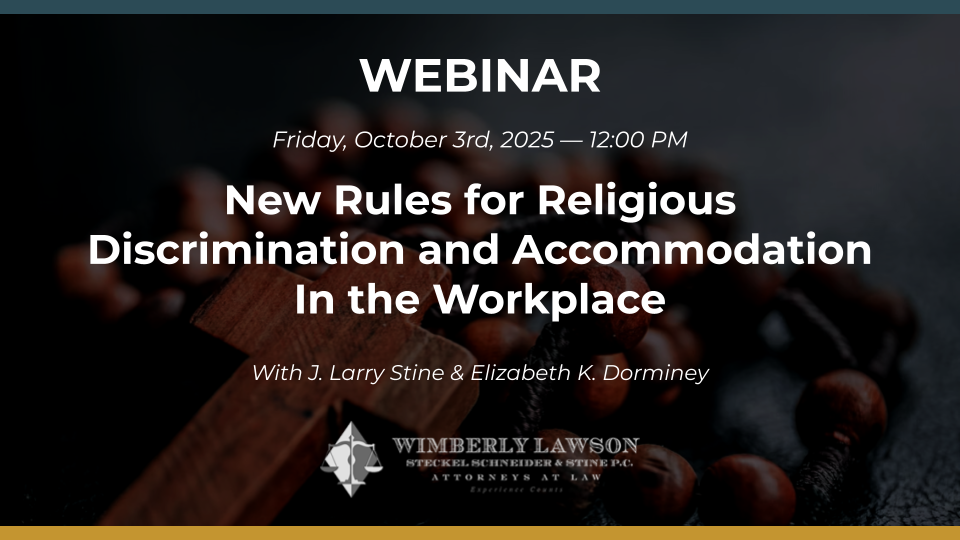-
Bloomberg Law
-
Business Resource Groups (BRGs)
-
CDC (Centers for Disease Control and Prevention)
-
Cemex
-
COVID-19
-
DACA (Deferred Action for Childhood Arrivals)
-
December 2021 Newsletter
-
December 2022 Newsletter
Employment Law Bulletin
A Monthly Report On Labor Law Issues
Volume XXXX, Issue 12
In this issue:In this issue, we have a range of informative articles that cover important topics affecting employers and individuals alike. Discover the updated EEOC poster requirements and why it's crucial to replace your old posters. Dive into the recent efforts supporting unions and the potential impact on employers' rights and collective bargaining. Stay informed about the CDC's revised COVID-19 guidance, focusing on individual responsibilities and recommendations for staying safe. Lastly, gain insights into what the midterm elections mean for the legislative and regulatory agenda, exploring potential areas of compromise between political parties.
Download the Newsletter as a PDFCheck out the latest legal developments affecting employers with this informative newsletter issue. Stay informed and avoid legal missteps by subscribing to email updates here.
-
December 2023 Newsletter
Employment Law Bulletin
A Monthly Report On Labor Law Issues
Volume XXXXI, Issue 12
In this issue: The UAW claims victory in a historic auto strike involving all three major Detroit automakers, using strategic short strikes to gain public support. Ford settled first, offering significant concessions. The NLRB announced a new joint employer rule, expanding entities under joint employment, facing immediate opposition. The EEOC undergoes a shift with a Democrat majority, focusing on diversity and workplace issues.
Download the Newsletter as a PDFCheck out the latest legal developments affecting employers with this informative newsletter issue. Stay informed and avoid legal missteps by subscribing to email updates here.
-
December 2024 Newsletter
Employment Law Bulletin
A Monthly Report On Labor Law Issues
Volume XXXXII, Issue 12
In this issue: Donald Trump won the 2024 presidency with broader minority and working-class support, while Republicans gained control of Congress. His administration is expected to roll back pro-union policies, revise DEI initiatives, and enforce stricter immigration rules, benefiting businesses but posing labor challenges.
Download the Newsletter as a PDFCheck out the latest legal developments affecting employers with this informative newsletter issue. Stay informed and avoid legal missteps by subscribing to email updates here.
-
Department of Homeland Security (DHS)
-
Department of Justice (DOJ)
Page 3 of 10
